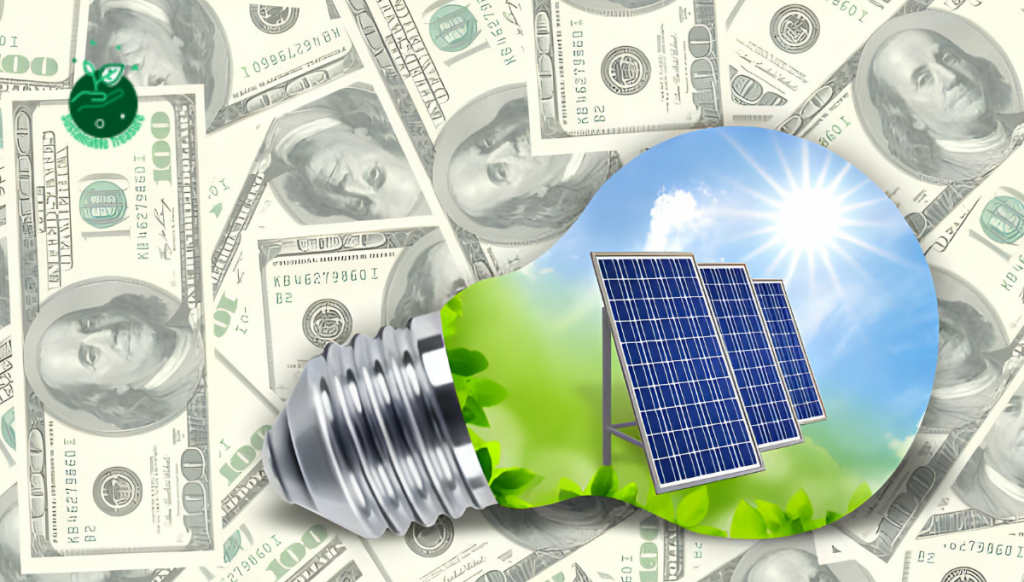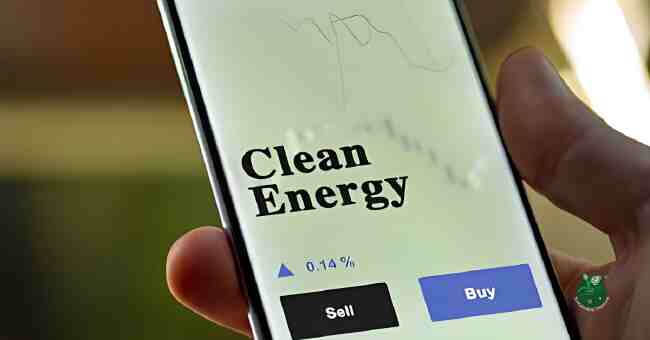Last updated on July 26th, 2024 at 04:19 pm
Table of Contents
How have clean energy mutual funds performance recently? Clean energy mutual funds have been on a hot streak – delivering sizzling returns that buck broader market turbulence.
Investing in clean energy has become an increasingly appealing option for those looking to align their values with their finances.
As climate change accelerates and countries around the world enact policies to reduce carbon emissions, the clean energy sector stands to benefit enormously.
This creates an opportunity for investors – but navigating the landscape of clean energy investing can be a daunting task.
That’s where clean energy mutual funds come in. These specialized funds invest in publicly traded companies across solar, wind, biofuels, hydroelectric, geothermal, and other renewable sources.
For investors hoping to add exposure to the fast-growing clean energy sector, mutual funds can provide a simplified way to invest in a basket of companies poised to profit from the global transition to clean power.
In this post, we’ll explore the world of clean energy mutual funds, including:
- Key benefits and risks
- Factors that impact performance
- A comparison of top-performing funds
- Portfolio allocation strategies
- Future outlook and growth projections
Let’s dive in.
Understanding Clean Energy Mutual Funds

Before analyzing performance, it helps to level set on exactly what defines a clean energy mutual fund.
What are clean energy mutual funds?
Clean energy mutual funds invest primarily in publicly traded stocks across renewable energy sectors like:
- Solar power
- Wind power
- Hydroelectric power
- Geothermal power
- Biofuels and biomass
They may also allocate a small portion to related sectors like electric vehicles, battery storage, smart grid technology, and more. This gives investors broad exposure to the clean energy value chain in a single fund.
Key sectors and technologies
Some of the major clean energy sectors and technologies funded include:
Solar:
- Photovoltaic panel manufacturing and installation
- Concentrated solar plants
- Solar cell and module efficiency improvements
Wind:
- Onshore and offshore wind farm development
- Wind turbine manufacturing
- Blade design and reliability enhancements
Other Renewables:
- Biofuel production from crops
- Waste-to-energy and biomass power
- Hydroelectric dam construction and power generation
- Geothermal drilling and steam generation
And across all sectors, funds invest in picks-and-shovels plays like:
- Inverters, transformers and other electrical components
- Energy storage solutions
- Smart meters and grid modernization technologies
Benefits of investing in clean energy funds
Some key advantages these funds offer investors include:
- Diversified exposure: Rather than picking individual stocks, funds provide a basket of holdings across sub-sectors
- Risk management: Professional fund managers constantly rebalance and reallocate to optimize for risk-adjusted returns
- Low barrier to entry: Minimum investments can be as low as $250-$1000 to get started
- Values alignment: For ESG-focused investors, clean energy funds allow values to align with financial decisions
Now that we’ve covered the basics on what defines these funds, let’s analyze the all-important historical performance.
Top Performing Clean Energy Mutual Funds
While past performance never guarantees future returns, analyzing the top clean energy funds by key benchmarks can help identify leaders poised for continued success.
Here are the top 3 clean energy mutual funds by 1-year, 3-year and 5-year average annual total returns:
| 1 Year Return | 3 Year Return | 5 Year Return |
|---|---|---|
| Fidelity Select Environment and Alternative Energy Portfolio: 46% | USCA All Terrain Fund: 30% | Fidelity Select Environment and Alternative Energy Portfolio: 16% |
| USCA All Terrain Fund: 35% | Fidelity Select Environment and Alternative Energy Portfolio: 25% | USCA All Terrain Fund: 15% |
| AB Sustainable Global Thematic Fund: 32% | AB Sustainable Global Thematic Fund: 18% | Brown Advisory Sustainable Growth Fund: 13% |
Data from U.S. News Best Mutual Fund rankings, 2023
The Fidelity Select Environment and Alternative Energy Portfolio takes the top spot in both 1-year and 5-year average annual return, buoyed by savvy stock picking and strong performances from holdings like solar manufacturer Enphase Energy, lithium producer Albemarle, and fuel cell stock Plug Power.
Meanwhile, the USCA All Terrain Fund places in the top 3 in every timeframe thanks to a balanced composition of stocks across utilities, industrials, materials and information technology. The fund maintains roughly 60% allocation to North American securities while seeking growth opportunities abroad as well.
The takeaway? While composition and strategy may differ, maintaining solid returns across multiple time horizons distinguishes these clean energy mutual funds that continue outpacing peer average returns.
Next let’s explore what’s driving performance in clean energy investing overall.
Factors Impacting Clean Energy Mutual Fund Returns
Clean energy mutual funds delivered sizzling returns in 2022 against a backdrop of rising inflation, interest rate hikes, and recessionary fears.
The sector has historically demonstrated higher volatility, but for funds focused on renewable sources, several tailwinds explain stunning growth that bucks broader market trends:
Government policy catalyzing investment
Surging investment in clean energy infrastructure relies heavily on policy support and incentives. As governments enact stricter emission standards and higher renewable energy targets, utility-scale wind, solar, hydroelectric, and other projects capture growing shares of spending.
In the U.S., key legislation passed includes:
- The Inflation Reduction Act which extended solar and wind tax credits while establishing new incentives for technologies like clean hydrogen and carbon capture. This enabled hundreds of billions in private sector investment according to estimates.
- State renewable portfolio standards that mandate minimum procurement percentages from renewable sources, further accelerating wind and solar deployments.
With clear policy signaling, clean energy funds stand to capitalize on world governments directing unprecedented levels of investment towards decarbonization.
Energy commodity dynamics
Soaring oil and gas prices, especially throughout 2022, further bolstered the investment case for non-fossil fuel dependent sources like solar, wind and battery storage.
While commodity markets remain cyclical, tight supply and demand balances lead analysts to predict oil remaining above $70 per barrel through 2030.
Higher baseline fossil fuel prices make renewable alternatives more cost competitive. This encourages utility-scale adoption and improves project returns – fueling earnings growth potential for related funds.
Improving technology driving down costs
The costs for building and operating renewable energy projects continue declining year-over-year thanks to better technology. LCOE (levelized cost of energy) measures the per megawatt hour price for an asset to break even.
For example, BloombergNEF solar LCOE analysis shows average global costs falling nearly 10% annually over the past decade. More efficient panels, improved manufacturing processes, and supply chain build-outs precipitate these cost declines seen across most clean energy technologies.
As this combination of market, policy and technology drivers converge – they lay the foundation for clean energy fund managers to choose from an expanding universe of companies operating profitable projects.
Now let’s review funds best positioned moving forward by analyzing qualitative aspects beyond past returns data.
Evaluating Top Clean Energy Mutual Funds
While historical performance provides a starting gauge for strong contenders, a holistic evaluation should incorporate both quantitative metrics and qualitative factors related to the fund manager, composition, and positioning.
Starting with quant factors, some key metrics to analyze include:
Returns:
- 1-year, 3-year and 5-year average annual total return
- Returns relative to category benchmark (Morningstar Clean Energy Index)
- Sharpe ratios assessing return per unit of risk taken
Fees:
- Expense ratio
- Purchase fee
- Redemption fee
- Account service fees
Lower expense and transaction fees help maximize portfolio gains over time. The average clean energy mutual fund expense ratio runs around 1.15%, providing a fee benchmark.
Risk Metrics:
- Standard deviation
- Beta
- Maximum drawdown
High sector volatility means risk management should be evaluated closely as well. Clean energy funds often carry twice the standard deviation of broad stock market indices.
Now qualitative considerations carry significant weight too in determining an all-weather portfolio allocation:
Firm history & team:
- Long-term track record
- Manager expertise within the clean energy sector
- Depth of analyst team
Investment strategy & process:
- How markets and securities are evaluated
- Risk management protocols
- Geographic and sub-sector allocation approach
Composition:
- Balance of established leaders versus emerging
- Market cap distribution
- Industry sub-sector mix evaluating over/underweights
Stewardship & engagement:
- Proxy voting aligned with ESG objectives
- Utilization of shareholder resolutions
- Participation in policy advocacy
Combining factors, a few clean energy funds rise to the top as smart picks to evaluate further:
| Fund | Manager Tenure | Net Assets | Holdings | Key Points |
|---|---|---|---|---|
| Fidelity Select Environment and Alternative Energy | 8 years | $1.1 billion | 88 | Heavily weights solar, capitalizes on semiconductor cyclicality |
| AB Sustainable Global Thematic | 4 years | $800 million | 67 | Blends stocks with green bond exposure, global mandate |
| Parnassus Mid Cap Fund | 25 years | $9 billion | 44 | Veteran team, specialized in ESG integration since 1984 IPO |
| Schroder Global Energy Transition | 1 year | $100 million | 30 | Concentrated approach tracking global decarbonization trends |
| SPDR MSCI ACWI Climate Paris Aligned ETF | 3 years | $890 million | 1,344 | Fixed income tilt via green bonds, broad developed + emerging markets exposure |
This list provides a starting point highlighting veteran teams with compelling strategies. But as with any investment, funds should align with individual risk tolerance, return objectives, and impact goals.
On risk, the next section covers portfolio construction tactics to manage clean energy’s wider performance swings.
Best Renewable Energy Mutual Funds
When it comes to identifying the best renewable energy mutual funds, performance is often a key factor for investors.
According to recent data, some standout performers include the Fidelity Select Environment and Alternative Energy Portfolio, the USCA All Terrain Fund, and the AB Sustainable Global Thematic Fund. These funds have consistently delivered strong returns over various time horizons, outpacing many of their peers in the process.
However, it’s important to note that past performance doesn’t guarantee future results. When evaluating renewable energy mutual funds, investors should consider a range of factors beyond just returns.
These may include the fund’s expense ratio, the experience and track record of the fund managers, the diversity of holdings within the fund, and the fund’s overall investment strategy.
By taking a holistic approach to fund selection, investors can better position themselves to capitalize on the long-term growth potential of the renewable energy sector while managing risk appropriately.
Constructing a Clean Energy-Focused Portfolio
While clean energy mutual funds offer targeted exposure to a rapidly growing theme, the sector’s historical volatility profiles necessitate a balanced approach.
By blending clean energy funds with diversified offerings, investors can aspire for market-beating returns while mitigating risk.
Blending Clean Energy with Broad Market Funds
Maintaining a core holding like a S&P 500 index fund provides ballast through shifting business cycles.
For investors seeking amplified exposure, a 70/30, 80/20 or 90/10 allocation split between broad market/clean energy funds helps smooth out volatility. Rebalancing across market environments, like shaving clean energy fund positions on big upswings while adding to declining broad market holdings, goes a long way towards long-term gains.
More conservative investors might start with a 50/50 allocation, then gradually increase clean energy fund weights as conviction builds.
Rebalancing strategies
Beyond maintaining target allocation splits, rebalancing strategies help lock in gains and manage exposures over time.
Rebalancing approaches include:
- Time-based: Rebalancing on a quarterly, biannual or annual basis to reach predetermined portfolio weights
- Threshold-based: Rebalancing when an asset class skews +/10% from original targets
- Volatility-based: Trim overweighted volatile positions while adding to safer assets amidst turbulence
The optimal frequency and strategy remains situationally specific to goals, time horizon and risk tolerance.
Factor investing approaches
For advisors and institutional managers, factor-based clean energy fund selection provides another path to diversify systemic risks.
Factors like low market capitalization, value composites and momentum metrics allow managers to strip out overarching sector volatility by isolating funds poised to thrive across environments.
Blending factor-tilted clean energy funds with negatively correlated mainstream counterparts facilitates hedging while maintaining thematic exposure.
While concentrated bets court big boom/bust swings, balanced blending with periodic rebalancing smooths the ride – allowing clean energy funds to amplify returns for buy and hold investors over the long run.
Future Outlook and Projections for Clean Energy Mutual Funds
If the past 5 years shipped eye-popping growth for clean energy companies and their investors – forecasts suggest the good times will keep rolling.
Analysing the interplay between global decarbonization commitments, cost curves and demand outlooks paints a decidedly bullish picture for funds leveraging the world’s transition towards renewable power over the coming decades.
Surging investment required to meet net zero emissions targets
With over 136 countries pledged to net zero emissions by 2050, keeping to these ambitions will necessitate a staggering lift in clean energy deployment. Under the International Energy Agency’s Net Zero roadmap, clean energy capacity must scale from under 30% today to over 90% by 2050.
Hitting these decarbonization milestones requires up to $5 trillion per year of investment in renewables, efficiency, grids and storage according to estimates. Mobilizing this level of annual capital inflows positions clean energy funds to capture expanding value.
IEA clean energy investment requirements under net-zero pathway
With clear visibility into sizeable capital formation on the horizon, funds investing across both legacy leaders and emerging growth plays stand ready to ride the wave.
Improving economics expanding clean energy demand
As mentioned prior, Levelized costs of energy for wind, solar, batteries and more continue falling thanks to technology improvements, scale and resource quality advantages in growing geographies.
Goldman Sachs projects clean energy costs falling 60% by 2030 while fossil fuels become up to 3x more expensive on average. This dramatic diverging cost dynamic makes the economic case for switching to renewables a no-brainer proposition.
With electricity and mobility the top two energy end use cases, the upside for clean energy funds focused on renewable utilities and electric vehicle leaders looks increasingly compelling.
Key trends warranting close attention
Emerging but fast evolving themes worth tracking include:
Energy storage adoption expanding renewable energy penetration and firming capacity
Green hydrogen scaling to decarbonize heavy transport and industry
Carbon removal technologies receiving surging attention and early funding
Vehicle electrification catalyzing demand for solar, wind and battery metals
While predicting breakout stars early remains difficult, diversified clean energy funds stand ready to capture disruptive innovations revolutionizing how the world produces and consures power.
All considered, while no investment comes without risks, the prevailing winds bolster the opportunity for disciplined clean energy fund investors to generate outsized risk-adjusted returns over long time horizons.
Best Clean Energy Mutual Funds
Clean energy mutual funds have been on a hot streak lately, delivering impressive returns that buck broader market turbulence. These funds offer investors a way to align their values with their finances while potentially reaping substantial rewards.
As the world grapples with climate change and governments implement policies to reduce carbon emissions, the clean energy sector is poised for tremendous growth.
For those looking to dip their toes into this exciting market, clean energy mutual funds provide a simplified way to invest in a basket of companies across various renewable energy sources.
These funds typically focus on publicly traded companies involved in solar, wind, biofuels, hydroelectric, and geothermal power, among others. By investing in a diverse range of clean energy companies, these funds offer a balanced approach to capitalizing on the global transition to clean power.
Mutual Funds Alternative Energy
Alternative energy mutual funds are becoming increasingly popular as investors seek to diversify their portfolios and support sustainable technologies.
These funds invest in companies that are at the forefront of developing and implementing alternative energy solutions, such as solar panels, wind turbines, and energy storage systems. By pooling resources from multiple investors, these funds can spread risk across a wide range of companies and technologies.
One of the key advantages of alternative energy mutual funds is their ability to provide exposure to both established players and emerging innovators in the clean energy space.
This balanced approach allows investors to benefit from the stability of larger, more established companies while also tapping into the growth potential of smaller, more agile firms.
Additionally, many of these funds are managed by experienced professionals who closely monitor the rapidly evolving alternative energy landscape, making strategic investment decisions to maximize returns.
FAQs

Is Clean Energy A Good Investment?
Clean energy has emerged as a potentially lucrative investment theme over the past decade thanks to supportive policy incentives, improving technology driving down costs, and the urgent need to reduce global carbon emissions. Many analysts and financial institutions forecast the sector continuing rapid growth for years to come.
According to projections by the International Energy Agency, over $100 trillion in clean energy investments are required by 2050 to reach net zero emissions.
With more countries setting ambitious decarbonization targets, capital continues flowing into renewable energy projects, infrastructure, and innovative technologies across solar, wind, grids, battery storage, electric vehicles, and more.
These tailwinds bode well for public equities related to the clean energy value chain.
However, the sector also demonstrates higher volatility historically compared to broader market indices. This means investors should incorporate prudent portfolio allocation and risk management protocols.
Blending clean energy funds with diversified, mainstream offerings helps smooth out performance swings.
For investors comfortable with above-average volatility, funds focused on renewable energy, clean technology, and sustainability themes seem likely to deliver strong long-term growth. But personal risk tolerance should dictate position sizing.
What Is The Best Renewable Energy Mutual Fund?
Pinpointing one “best” mutual fund remains an impossible task given unique investor goals, time horizons and risk appetites. However, a few renewable energy mutual funds consistently rank near the top for historical returns over multiple time periods.
Over the past 5 years, the Fidelity Select Environment and Alternative Energy Fund tops performance charts, averaging over 16% annually. Managed by veteran Fidelity stock picker Jeff Weiss, the concentrated portfolio heavily oversees U.S. solar, utilities and battery storage leaders.
Another strong performer comes from Kayne Anderson Rudnick, which runs the Virtus KAR Clean Energy ETF. This fund takes a more diversified bent with global exposure across wind, solar, hydro, geothermal and biofuels.
Beyond returns, low fees, experienced managers, robust stewardship practices, diversified holdings across sub-sectors, and compelling forward-looking theses also help distinguish leading renewable energy mutual funds for closer consideration.
What Are The Top 5 Performing Mutual Funds?
While many factors from risk to qualitative judgement determine leading funds, a review of top performers across common timeframes provides helpful perspective.
According to U.S. News rankings aggregating over 5,800 mutual funds, the top 5 by 3-year annualized returns include:
- ARK Genomic Revolution Fund: 32%
- Fidelity Advisor Series Growth Opportunities Fund: 27%
- Morgan Stanley Insight Fund: 25%
- AB Discovery Growth Fund: 23%
- ARK Innovation Fund: 22%
The leaders span various categories ranging from health care to general U.S. equity. But no clean energy or renewable funds crack the top 5 over this shorter timeframe.
Looking at the 5-year horizon filters for steadier outperformers, with the Virtus KAR Clean Energy Fund and Brown Advisory Sustainable Growth Fund entering the mix with both delivering over 16% annualized.
Which Mutual Fund Has Strong Growth?
In this low for longer yield environment, mutual funds focused on high growth sectors and disruptive innovation themes offer among the strongest total return outlooks according to projections.
Evaluating funds with 5-year annualized returns already exceeding 15% surface a few promising categories:
Clean Energy: Fidelity Select Environmental and Alternative Energy, Virtus KAR Clean Energy
Health Care Innovation: ARK Genomic Revolution, T. Rowe Price Health Sciences
Technology & Communication: Morgan Stanley Insight Fund, Fidelity Advisor Series Growth Opportunities
These leaders managed by seasoned portfolio managers provide exposure to structural global trends almost certain to demonstrate durable growth over the next 5-10 years. Their composition merits closer inspection for those seeking amplified upside potential.
Do Green Mutual Funds Perform Well?
Green mutual funds, which invest according to a dual mandate considering environmental impact alongside returns, have generally delivered competitive if not market-beating performance in recent years. They provide a way for values-focused investors to grow wealth responsibly.
According to Morningstar, 70% of green mutual funds ranked in the top halves of their respective fund categories over the past 3 years. The best performers include environmental stock picking funds like Green Century Equity and eco leaders funds such as Brown Advisory Sustainable Growth averaging 13-15% annual returns over the past 5 years.
While relatively nascent, expect green fund products, data, and performance transparency to continue maturing to better inform and empower sustainable investors.
How Much Is Invested In Clean Energy?
According to projections by Bloomberg New Energy Finance, over $1.2 trillion has been invested into clean energy capacity and enabling technologies globally since 2010. Annual investments into renewables and supporting infrastructure have tripled over the past decade.
In the U.S., the passing of the landmark Inflation Reduction Act which boosted tax credits for clean technology paired with state renewable portfolio standards will catalyze upwards of $1 trillion in additional private clean energy investment by 2035 according to estimates.
Accelerating decarbonization commitments by governments and corporations are spurring rapid growth projections for years to come. This provides a Assertion Error irrational tailwind for public equities related to clean energy as increasing capital flows into large-scale solar, wind and battery storage projects.
Which 5 Star Mutual Funds Have 10 Year Performance?
While most rating systems like Morningstar assign 5 stars to funds based on a mix of quantitative metrics and qualitative judgements, analyzing long term returns offers and objective measure.
Over the past 10 years, some notable 5-star rated mutual funds consisting of either active stock picking or passive index investing approaches include:
- Fidelity Select Software & IT Services Portfolio: 16%
- Vanguard Information Technology ETF: 16%
- PGIM Jennison Health Sciences Fund: 15%
- Vanguard Dividend Appreciation ETF: 14%
- Vanguard International Growth Fund: 9%
The outperformers achieved premium returns largely focused on secular growth sectors like technology, communications and health care. This surfaces commonalities of funds that manage to generate consistent market-beating returns over longer measurement timeframes of a decade or beyond.
How Big Is The Clean Energy Venture Fund?
As a whole, global venture capital investment into clean technology startups reached record levels in recent years thanks to accelerating demand for innovative solutions tackling climate change.
According to Bloomberg analysis, VC investments in climate tech surged to $87.5 billion in 2022 – more than double the prior year. While down from the 2021 peak, Pitchbook still tracked north of $60 billion invested across over 5,000 climate tech startups last year.
Many specialized investment funds participate in early funding rounds for renewable energy, carbon removal and clean transport entrepreneurs. Breakthrough Energy Ventures stands apart as one of the largest climate-focused VC funds – established by Bill Gates and backed by billionaires like Jeff Bezos, Jack Ma and Michael Bloomberg who’ve pledged a total of $2 billion. This provides substantial capital for promising startups aiming to commercialize emerging emission-cutting innovations.
Does Clean Energy Pay Dividends?
Many traditional utility and energy companies pay steady dividends backed by earnings from power generation assets and distribution infrastructure. Clean energy companies focused on developing renewable assets or selling components like solar panels and wind turbines have invested most profits back into growth historically.
However, as solar, wind and other technologies mature along their cost curves, free cash flow generation picks up. This allows companies to return excess capital to shareholders.
Though the amounts and yields remain below traditional utility payouts, a growing number of clean energy stocks initiated or expanded dividends recently. Most renewables-focused companies that pay dividends fall in categories like:
- YieldCos holding renewable project assets
- Solar and wind farm operators
- More established solar panel/inverter manufacturers
So income-seeking investors can increasingly tap into dividends by selecting from clean energy stocks while benefiting from exposure to the sector’s growth runway.
Is Clean Energy The Future?
Clean renewable energy production and consumption looks extremely likely to dominate future energy mixes based on worldwide decarbonization commitments, improving economic competitiveness, and the pressing need acknowledged by scientists to reach net zero emissions by 2050.
Under climate scenarios aligned with temperature rise capped at the Paris Agreement goal of 1.5°C, organizations like BloombergNEF forecast over 90% of global electricity generation coming from solar, wind and enabling storage technologies by 2050. As costs fall farther below fossil fuel alternatives while reliability improves, widespread adoption of renewables continues accelerating.
The clean energy transition expanding access along the way also increasingly makes social and economic sense for communities and countries across the globe. This clean power revolution supports a future where energy underpins sustainable development and higher quality of life standards for both current and future generations.
Conclusion on Clean Energy Mutual Fund Performance
For investors seeking to participate in the monumental energy system transformation this century, clean energy mutual funds offer a diversified, low-barrier pathway to amplified growth.
While the sector’s notoriously volatile swings may give prudent investors pause, factors like improving technology, supportive policy, and urgent decarbonization needs appear likely to sustain momentum.
Reviewing past performance and blend strategies illuminates a path for clean energy funds to energize portfolio returns. But ultimately personal goals, values and risk tolerance should dictate position sizing.
This overview aims to provide a balanced perspective for evaluating the role specialized clean energy mutual funds can play in portfolios targeting ethical impact alongside financial gains.
With climate action racing against time, the dramatic scaling of renewable energy looks increasingly inevitable. For stock pickers keeping pace with the global clean power revolution ahead, substantial growth runways remain open for years to come.



